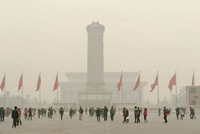Advertisement
Grab your lab coat. Let's get started
Welcome!
Welcome!
Create an account below to get 6 C&EN articles per month, receive newsletters and more - all free.
It seems this is your first time logging in online. Please enter the following information to continue.
As an ACS member you automatically get access to this site. All we need is few more details to create your reading experience.
Not you? Sign in with a different account.
Not you? Sign in with a different account.
ERROR 1
ERROR 1
ERROR 2
ERROR 2
ERROR 2
ERROR 2
ERROR 2
Password and Confirm password must match.
If you have an ACS member number, please enter it here so we can link this account to your membership. (optional)
ERROR 2
ACS values your privacy. By submitting your information, you are gaining access to C&EN and subscribing to our weekly newsletter. We use the information you provide to make your reading experience better, and we will never sell your data to third party members.
Materials
Indium-tin Oxide Linked to Respiratory Disease
INDUSTRIAL TOXICOLOGY: Crucial chemical for liquid-crystal display manufacturing may be health hazard
by VIVIEN MARX
January 11, 2005
Indium-tin oxide (ITO) as a thin-film coating can transform glass into a high-tech material of crucial importance to the manufacture of liquid-crystal displays (LCDs). However, a new study reveals that workers who inhale ITO can develop serious respiratory disease [Eur. Respir. J., 25, 200 (2005)].
A previously healthy 30-year-old engineer visited Tokyo’s Toranomon Hospital because of coughing and shortness of breath. He was diagnosed with pulmonary fibrosis and emphysema. His lungs also showed deposition of brown particles that turned out, in X-ray spectrometric analysis, to be indium and tin. His blood level of indium was 51 µg per L; a normal level is less than 0.1 µg per L.
The patient had been exposed to ITO as an aerosol for four years while working in a plant that manufactured ITO-coated conductive films. His doctor, Sakae Homma, chief of the department of respiratory medicine at the hospital, believes ITO inhalation caused the lung damage.
The patient has since transferred to another department within the company. He has been well and the disease has not progressed, although the particles remain in his lungs, Homma says. Another man from the same factory and also engaged in ITO film production had previously died of respiratory failure caused by pneumonia [J. Occup. Health, 45, 137 (2003)]. In the autopsy, this man’s lung tissue revealed the same kind of injury, Homma says.
“More attention needs to be paid to the possible toxic effects of indium compounds,” Homma says. This caution is particularly true, he notes, given the recent growth of the market for ITO-containing LCDs.
Numerous companies are involved with indium, ranging from mining and refining firms such as Umicore and Sumitomo Metal Mining to display manufacturers like Chi Mei Optoelectronics and Sharp. In between are firms like Merck KGaA, which supplies the display industry with liquid crystals and other components, including ITO-coated glass. In a reaction to Homma’s study, Merck KGaA states: "The health and safety of employees is, and always has been, a top priority of Merck KGaA. We will investigate this issue and take measures if necessary."
The National Institute for Occupational Safety & Health has had its eye on indium compounds, including ITO, for a while, says Mark Toraason, science director of NIOSH’s Division of Applied Research & Technology. There are nine indium compounds that NIOSH considers “potential hazards,” including ITO, although there is a lack of data, he says. Homma’s work “raises a huge concern,” in Toraason’s view, and “will invigorate our concern.”




Join the conversation
Contact the reporter
Submit a Letter to the Editor for publication
Engage with us on Twitter